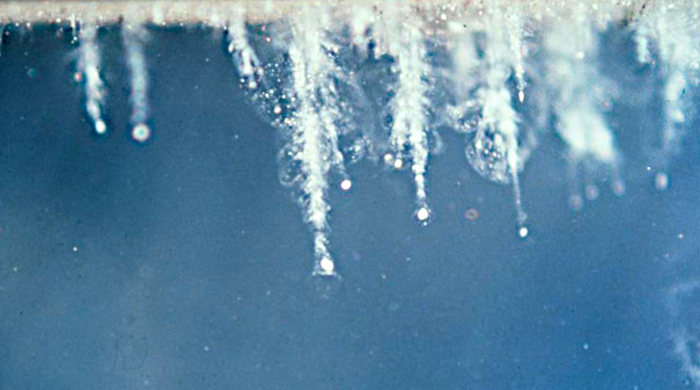Aliens could be found in dust, scientists say
Grains ejected from other worlds could include signs of life

Your support helps us to tell the story
From reproductive rights to climate change to Big Tech, The Independent is on the ground when the story is developing. Whether it's investigating the financials of Elon Musk's pro-Trump PAC or producing our latest documentary, 'The A Word', which shines a light on the American women fighting for reproductive rights, we know how important it is to parse out the facts from the messaging.
At such a critical moment in US history, we need reporters on the ground. Your donation allows us to keep sending journalists to speak to both sides of the story.
The Independent is trusted by Americans across the entire political spectrum. And unlike many other quality news outlets, we choose not to lock Americans out of our reporting and analysis with paywalls. We believe quality journalism should be available to everyone, paid for by those who can afford it.
Your support makes all the difference.Alien life could be found in dust ejected from other worlds, scientists have said.
The grains, ejected from other worlds, could still be carrying signs of life on their planets.
When a planet experiences an enormous collision, such as an asteroid impact, parts of its material are often flung into space. It can then travel through the universe, covering vast distances over huge periods of time.
That material might include direct or indirect signs of life on those planets, such as fossils of micro-organisms.
And a new paper suggests that humanity could one day study that dust for those same signs of life – or may even be able to now.
“I propose we study well-preserved grains ejected from other worlds for potential signs of life,” said the University of Tokyo’s Tomonori Totani, author of the new paper. “The search for life outside our solar system typically means a search for signs of communication, which would indicate intelligent life but precludes any pre-technological life.
“Or the search is for atmospheric signatures that might hint at life, but without direct confirmation there could always be an explanation that does not require life. However, if there are signs of life in dust grains, not only could we be certain, but we could also find out soon.”
Bigger pieces of material that are thrown into space usually fall back down into their planet, or join new permanent orbits around a planet, and much smaller ones are probably too small to include useful signs of life. But there may be pieces of dust that are in the middle – around 1 micrometre in size – that could be key to finding life elsewhere.
Such a piece of dust is not only big enough to host a single-celled organism, but small enough to potentially leave its own solar system. Once it has, it might make its way to ours, Professor Totani suggested.
What’s more, some of those grains might already be on Earth. Identifying it as coming from another solar system might be difficult, and could require extra work.
“My paper explores this idea using available data on the different aspects of this scenario,” said Totani. “The distances and times involved can be vast, and both reduce the chance any ejecta containing life signs from another world could even reach us. Add to that the number of phenomena in space that can destroy small objects due to heat or radiation, and the chances get even lower.
“Despite that, I calculate around 100,000 such grains could be landing on Earth every year. Given there are many unknowns involved, this estimate could be too high or too low, but the means to explore it already exist so it seems like a worthwhile pursuit.”
A paper describing the work, ‘Solid grains ejected from terrestrial exoplanets as a probe of the abundance of life in the Milky Way’, is published in the International Journal of Astrobiology.
Join our commenting forum
Join thought-provoking conversations, follow other Independent readers and see their replies
Comments